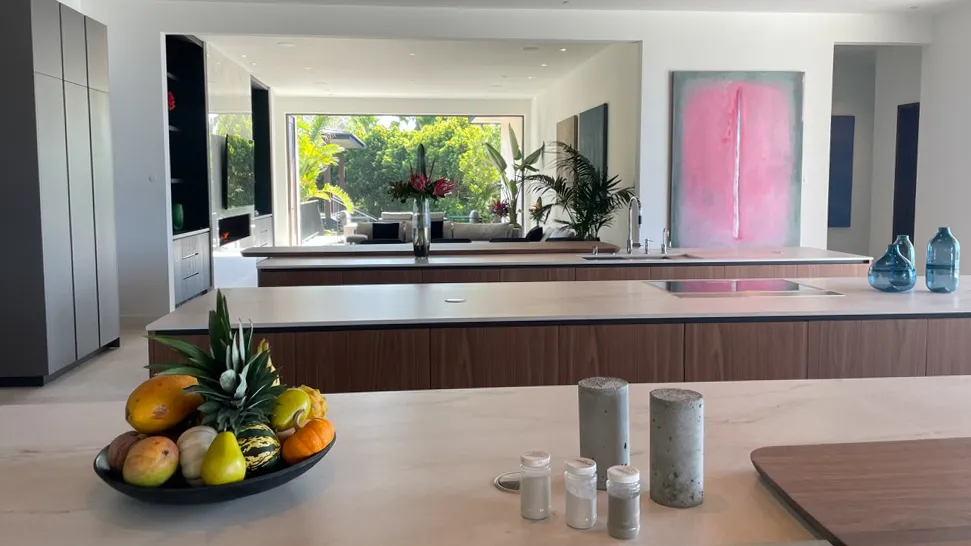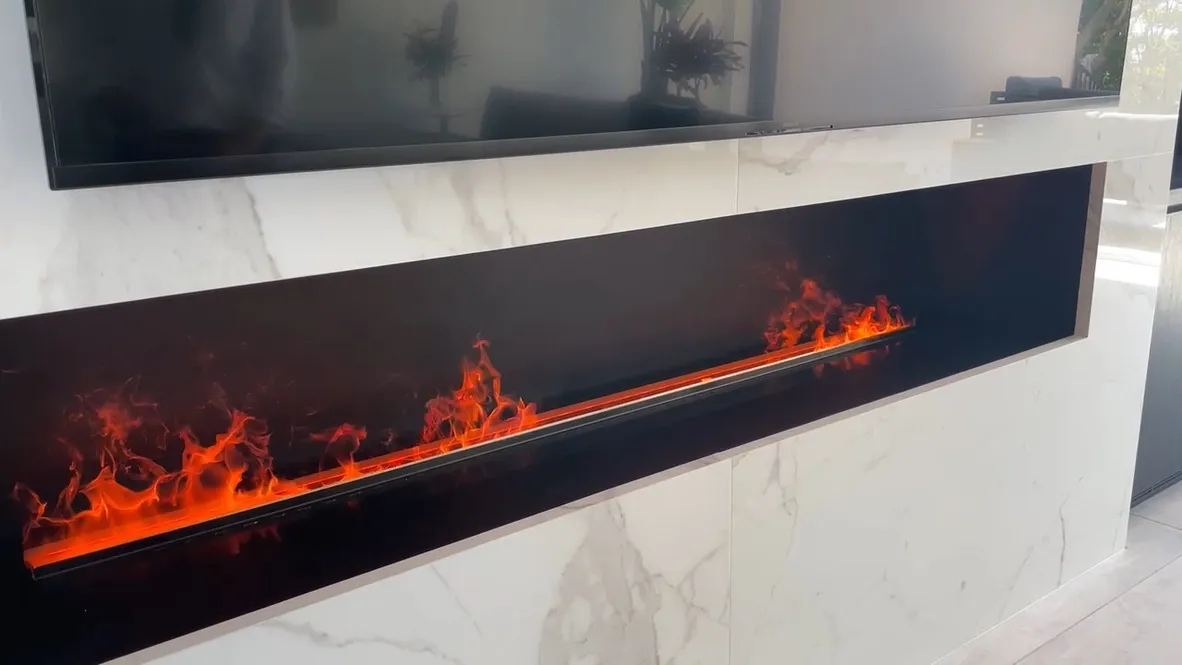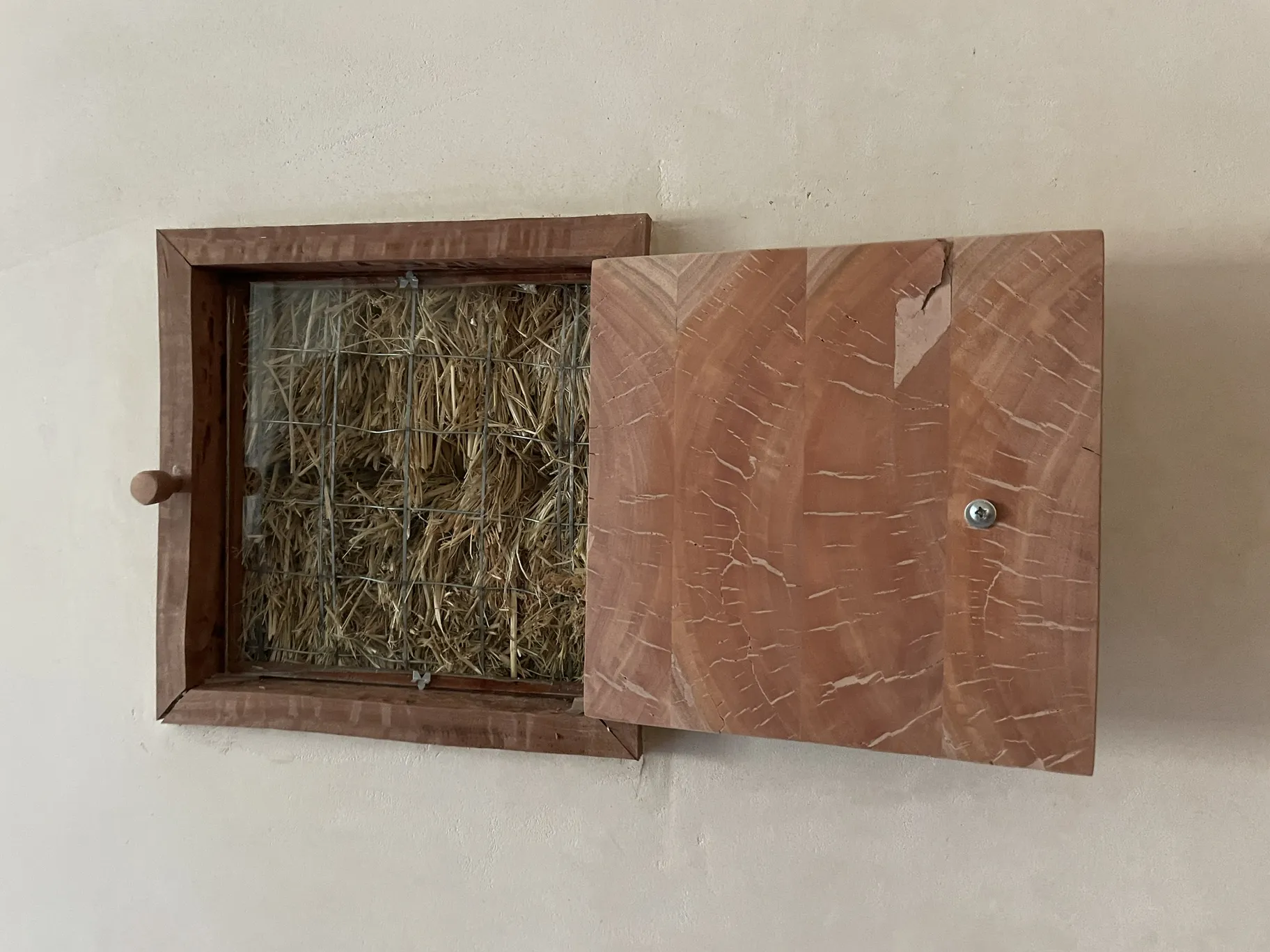You drive up a gated cobblestone driveway, past carefully curated drought-tolerant gardens, to your 16,000 square-foot Malibu home, plug in your EV, and walk through the grand lanai to admire the ocean view through your floor-to-ceiling windows. You haven’t decided yet whether to practice your swing on the putting green or take a dip in the infinity pool before heading down to the home theater.
I’ve got good news: This home is for sale. The cost to you? A mere $28,500,000.
The cost to the planet? Zero.
The home is “net-zero,” meaning carbon-negative building materials, like the wood that stored carbon during its life as a tree, cancel out the materials that did require carbon to produce, like the building’s foundation. All together, building and operating the house does not release more carbon than it takes from the atmosphere. Hence, net-zero.
How did the builders do it? And does it have to cost over $20 million?

Reclaimed wood, low-carbon concrete, solar panels, and batteries make this home’s carbon footprint net-zero. Photo by Caleigh Wells.
Let’s start at the bottom.
The concrete foundation – traditionally one of the most carbon-intensive parts of a home – has just over half the carbon emissions of standard concrete. “It’s stronger and better than conventional concrete,” says the home’s developer, Scott Morris.
There were carbon emissions in making that concrete, yes, but those are canceled out by carbon-negative parts of the home, like the wooden deck.

The “fireplace” doesn’t feel warm when you stick your hand in the “flames.” Photo by Caleigh Wells.
The fireplace isn’t actually burning wood and releasing carbon. It’s a convincing display of LED lights and water vapor. The ceiling and outdoor decks are made from recycled or reclaimed wood in California that’s certified as sustainably sourced.
The best part?
“It’s really important for people to know that a lot of the low-hanging fruit items, such as concrete, is cost-neutral,” Morris explains. That means it doesn’t cost more to build than the traditional alternative.
Which is why, no, you don’t need tens of millions in your housing budget to build a zero-carbon home.
There’s a much humbler, 2000-square-foot home in a quiet Ventura neighborhood that’s just as eco-friendly as the one in Malibu. It looks like all the homes nearby. “We wanted it to look as normal as it could to essentially appeal to anybody that would want to live in a neighborhood like this,” says design architect Dylan Johnson, who built the house.
There’s a clue to what’s different about the house behind a small peekaboo door in the hallway wall. It reveals what the house is made of: straw.

Behind the “truth window,” there is no wood, no metal studs, no cotton candy-looking insulation. It’s just straw. Photo by Caleigh Wells.
Rice straw stores carbon from its previous life growing in a field in the Sacramento Valley, and is cheaper than conventional building materials.
The idea for this house came from its owner, Yvon Chouinard, who’s most famous for founding Patagonia, the clothing company whose slogan is “save our home planet.”
“I've had an idea about straw since the 60s,” he tells KCRW as he leads a tour of the home. “There's, I don't know, 10 different methods of making a house without using two by fours and two by sixes, and cutting down forests.” But, he says, as long as it’s easy to use lumber, that’s what builders will do. “There’s just the inertia. And so I wanted to do something about it. And we did.”
The straw naturally provides insulation, keeping the home’s energy bills very low. It’s packed so tightly that it isn’t susceptible to mold or fire.
The Malibu house and the straw bale house both have heat pumps, EV chargers, induction stoves, and solar panels. Thus, they’re cheaper to run than a home that uses fossil-fuel alternatives. Installing those electric options can be more expensive, but that’s why the federal government is stepping in with rebates to make the eco-friendly option just as affordable.
Johnson says the main reason these low-carbon homes are still so rare is because contractors don’t know how to build them yet.
“We need to open our eyes to simple, low-tech, already existing things you can do,” he says as he shows off the Ventura house. “If anything, the construction of this home is lower tech in many ways than a new stick-framed home. There’s less engineering. [We’re] just using basic things from nature to create a home.”
That approach may get more appealing to developers and builders this year, when federal money for green building is expected to hit California. Just as car mechanics have gotten used to EVs, building contractors may soon find straw walls and sustainable hardwood are just how you build in California.
